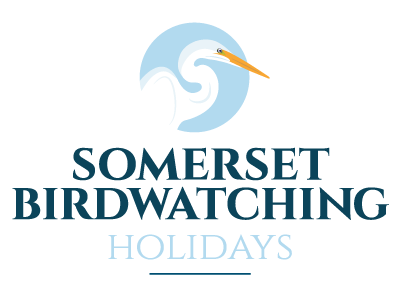The world has gone cuckoo
Another week of lockdown.
Another Saturday morning’s birdwatching incorporated into my permitted daily exercise quota. Today was a cycle to the Patch.
The Patch, the Patch, the Patch; it never disappoints.
When I arrive, the roadside pond is a picture, with a group of male and female tufted ducks doing what ducks do. A single little egret stalked the far edge; two gadwalls, a moorhen, and a rather splendid male pochard, with a bright red/chestnut head, also bobbed about - I wonder if his mate might be sitting on eggs in the reeds? One bird which was doing just that was a Canada goose. The gander was trying to look nonchalant at one side of the pond while the goose was sitting on a nest on the little island in the middle of the pond. Note to self - can a goose look nonchalant?
I was happy with that - a good warm-up act before I had even parked my bike.
As I walk down the track that leads into the Patch, I always get a flutter of anticipation, just wondering what might happen - because something always does when you go round the Patch. It never disappoints. It could be the sight of a roe deer family in the wood, a treecreeper mousing up a trunk of an oak, or a certain ‘bird in question’ singing from the reeds making the sound of a fishing reel (this bird was so rare, and our sighting was so hush-hush, that if I put its name in print, the ‘Wildlife Stasi’ would be all over me (They do read this blog you know - pity few others do).
I didn’t have to wait long for the action to start - I’m not even a hundred yards in when out of the reeds on my left, shot a large brown bird. At first, I thought it was a big buzzard, but no, that buzzard has a hell of a long beak, - it was a bittern. It flew out of the reeds, banked left, and was gone. I pumped the air as if I had just scored a goal straight from the kick-off.
‘Yes! one-nil’, I said to myself.
Calm soon returned and with it so did the birdsong - everywhere - Blackcap, chiffchaffs, willow warblers, cooing pigeons, the clicking from coots out on the water, and distant drumming of a woodpecker. There were orange-tip butterflies and bumblebees flitting around as I quietly entered the wood where the canopy was now almost complete. A pair of crows squabbled with each other, from a scruffy nest at the top of one of the tall trees, and a chiffchaff kept on calling. Around my ankles, long fronds of bracken reached for the sky trying to unfurl themselves before the sunlight in the wood gets completely stifled.
A Cetti’s kicked off out somewhere in the reeds.
More willow warblers warbled their summer song, and more blackcaps tried to out-sing them as I headed slowly down the avenue. About halfway down, I noticed that the badger set seemed to have increased in size and activity since my last visit.
The Avenue
Now back out in the open by the South Drain in bright sunshine, it seemed only a couple of months ago, when the world was a different place, and we had watched from this spot half a million or so starlings come in to roost in a stunning murmuration. Now, it was a much more summery scene altogether, with blackthorn bushes covered in white blossom making them look like a line of bridesmaids draped in white lace, and on top of one, I could see and hear a bold little whitethroat singing out its scratchy call, just arrived within the last week from its migration.
Rape-seed was bright and yellow along each side of the large drain that acts as the southern boundary to the Patch, their seeds having been dispersed downstream in winter floods. From within the yellow flowers, little reed warblers dodged around, chuntering away to themselves.
Fresh green shoots pushing up from the base of the reeds
The main blocks of reed beds still had more of a wintery look to them, with last year’s growth now a light sandy colour, although bright green fresh shoots were pushing up from the base, and it won’t be long before the whole place is a verdant green. Sitting at the top of one of the sedges was a cocky male reed bunting, and nearby was my first sedge warbler of the season singing out his bursts of staccato before leaping up into the air and parachuting a few meters further on into the reeds.
Another first duly appeared right on cue, with a loud ‘cuck-oo’ coming two or three times from a high treetop at the edge of the reedbeds. ‘Cuck-oo’ there it was again, this time he broke from cover and flew overhead showing off his long hawk-like wings and I’m sure, his shadow silenced the whole reedbed, as all the warblers ducked for cover hoping that the cuckoo hadn’t noticed them.
In this ‘cuckoo’ world of COVID-19, lockdowns, social distancing and now over 20,000 deaths in Britain alone from the pandemic, it was a tonic to escape all the madness and sadness, to be back on the Patch to see first hand that the world is still turning, and nature is doing a pretty good job of looking after itself.
Indeed, I was further rewarded for my cycling efforts with a large hare running up the middle of a quiet lane to greet me. The first hare I have seen on the Levels for many months. When it eventually noticed me, it stopped, turned on a sixpence and ran off back up the middle of the lane before disappearing through a gate into a field of lambs.


